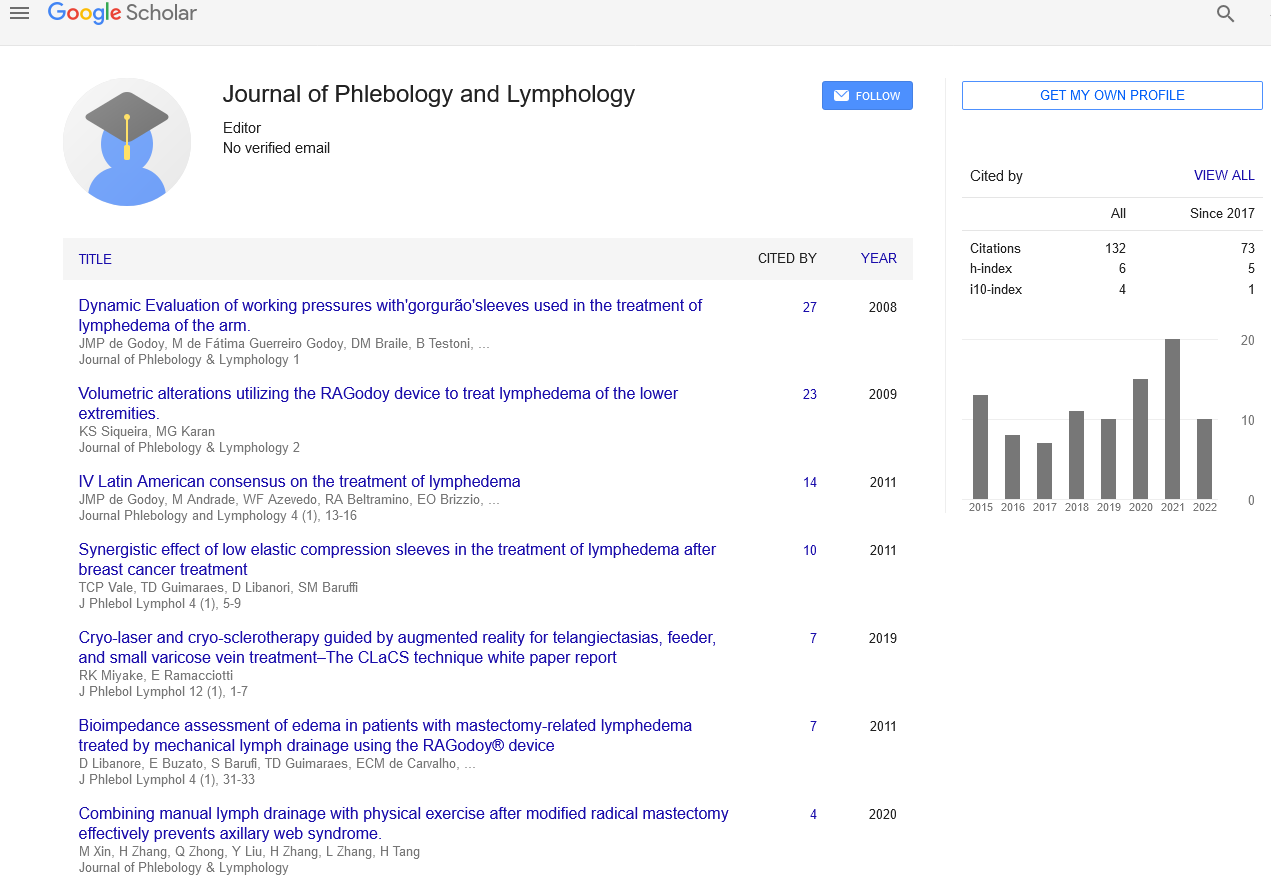A brief idea on hypocalcaemia
Received: 02-Nov-2021 Accepted Date: Nov 16, 2021; Published: 23-Nov-2021
Citation: Yang H, Fang R. A brief idea on hypocalcaemia. J Phelebol Lymphol. 2021;14(6):9
This open-access article is distributed under the terms of the Creative Commons Attribution Non-Commercial License (CC BY-NC) (http://creativecommons.org/licenses/by-nc/4.0/), which permits reuse, distribution and reproduction of the article, provided that the original work is properly cited and the reuse is restricted to noncommercial purposes. For commercial reuse, contact reprints@pulsus.com
Description
Hypercalcaemia, additionally spelled hypercalcemia, could be a high metal (Ca2+) level within the body fluid. The conventional vary is 2.1–2.6 mmol/L (8.8–10.7 mg/dL, 4.3–5.2 mEq/L), with levels larger than 2.6 mmol/L outlined as symptom. Those with a light increase that has developed slowly generally don't have any symptoms. In those with larger levels or speedy onset, symptoms might embody abdominal pain, bone pain, confusion, depression, weakness, excretory organ stones or associate degree abnormal rhythm together with asystole. Different causes embody pathology, T.B, pathologist illness, Multiple Endocrine pathologic process (MEN), cholecarciferol toxicity, familial hypocalciuric hypercalcemia and bound medications like metal and thiazide. Designation ought to usually embody either a corrected metal or ionized metal level and be confirmed once per week. Specific changes, like a shortened QT interval and prolonged PR interval, is also seen on associate degree graph (ECG). Treatment might embody endovenous fluids, furosemide, thyrocalcitonin or pamidronate additionally to treating the underlying cause. The proof for water pill use, however, is poor. In those with terribly high levels, hospitalization is also needed. dialysis is also utilized in people who don't answer different treatments. In those with cholecarciferol toxicity, steroids are also helpful. Symptom is comparatively common. Primary adenosis happens in 1–7 per 1,000 people, and hypercalcemia happens in regarding 2.7% of these with cancer.
The neuromuscular symptoms of hypercalcaemia are caused by a negative bathmotropic effect due to the increased interaction of calcium with sodium channels. Since calcium blocks sodium channels and inhibits depolarization of nerve and muscle fibers, increased calcium raises the threshold for depolarization. This results in diminished deep tendon reflexes (hyporeflexia), and skeletal muscle weakness.
Other symptoms include cardiac arrhythmias (especially in those taking digoxin), fatigue, nausea, vomiting (emesis), loss of appetite, abdominal pain, and paralytic ileus. If kidney impairment occurs, as a result, manifestations can include increased urination, urination at night, and increased thirst. Psychiatric manifestation can include emotional instability, confusion, delirium, psychosis, and stupor. Calcium deposits known as limbus sign may be visible in the eyes.
Symptoms are more common at high calcium blood values (12.0 mg/dl or 3 mmol/l). Severe hypercalcaemia (above 15–16 mg/dl or 3.75–4 mmol/l) is considered a medical emergency: At these levels, coma and cardiac arrest can result. The high levels of calcium ions decrease the neuron membrane permeability to sodium ions, thus decreasing excitability, which leads to hypotonicity of smooth and striated muscle. This explains the fatigue, muscle weakness, low tone and sluggish reflexes in muscle groups. The sluggish nerves also explain drowsiness, confusion, hallucinations, stupor or coma. In the gut, this causes constipation. Hypocalcaemia causes the opposite by the same mechanism.
A hypercalcaemic crisis is associate degree emergency scenario with a severe hypercalcemia, typically on top of or so 14 mg/dL (or 3.5 mmol/l). The main symptoms of a hypercalcaemic crisis ar oliguria or anuresis, likewise as drowsiness or coma. After recognition, primary gland disease ought to be tried or excluded. In extreme cases of primary gland disease, removal of the endocrine when surgical neck exploration is that the solely thanks to avoid death. The service program ought to be performed among hours, in parallel with measures to lower humour metallic element. Treatment of selection for acutely lowering metallic element is in depth association and thyrocalcitonin, likewise as bisphosphonates (which have result on metallic element levels when one or 2 days).
Conclusion
Initial therapy, hydration, increasing salt intake, and made symptom: Hydration is required as a result of several patients ar dehydrated thanks to projection or urinary organ defects in concentrating piddle. Increased salt intake can also increase bodily fluid volume likewise as increasing Na excretion, urinary metallic element excretion. After rehydration. A loop drug like water pill will be given to allow continued giant volume blood vessel salt and water replacement whereas minimizing the chance of blood volume overload and respiratory organ puffiness. Additionally, loop diuretics tend to depress metallic element organic process by the urinary organ thereby serving to to lower blood metallic element levels can sometimes decrease humour metallic element by 1–3 mg/dL among 24 hours caution should be taken to stop metallic element or metallic element depletion.





